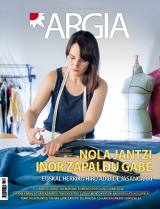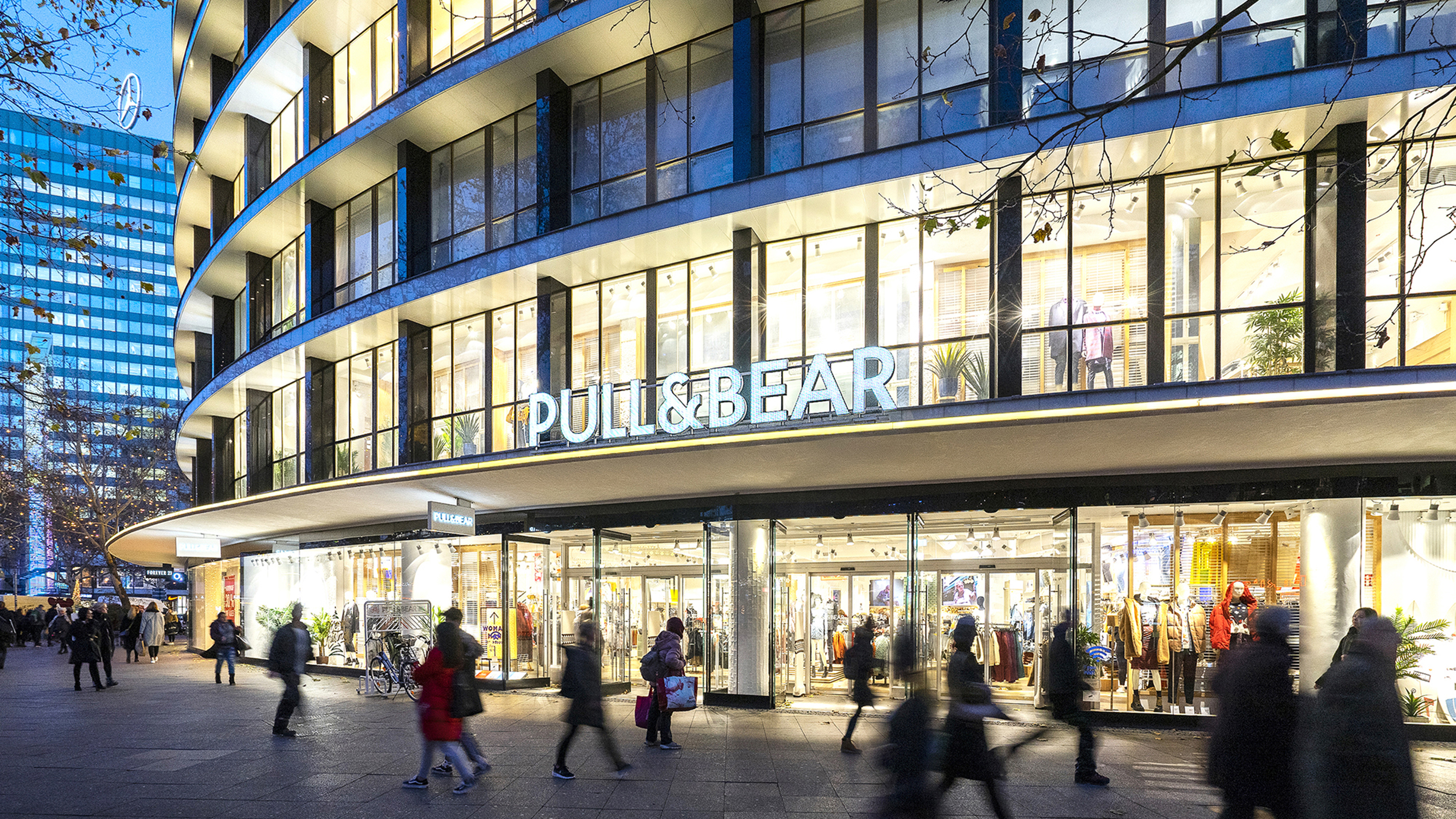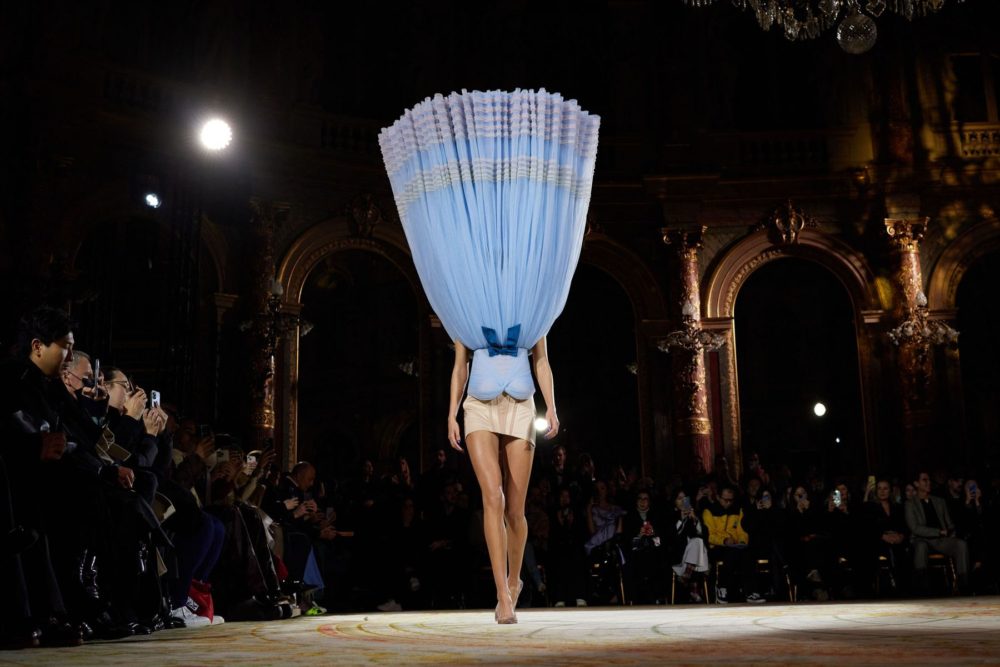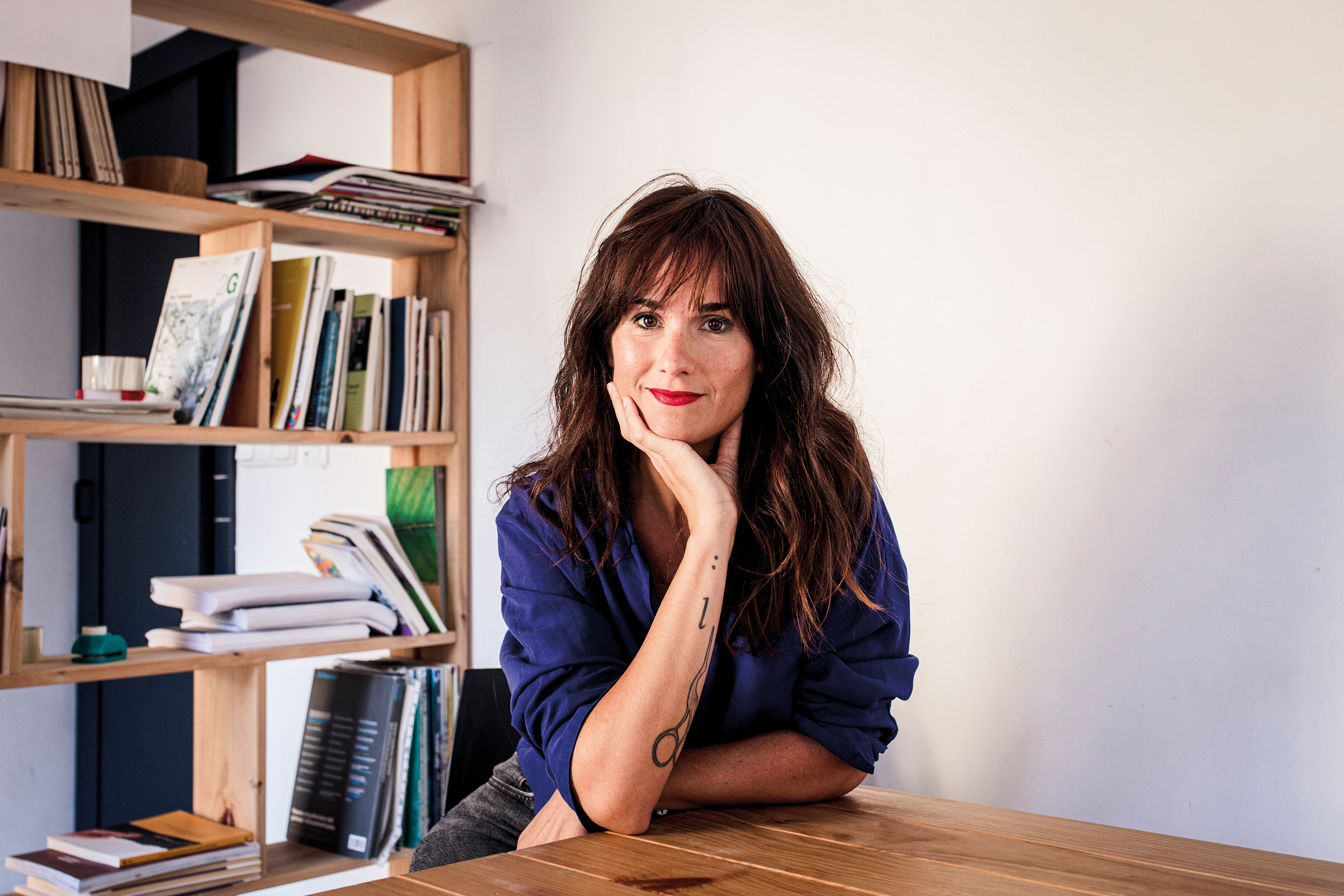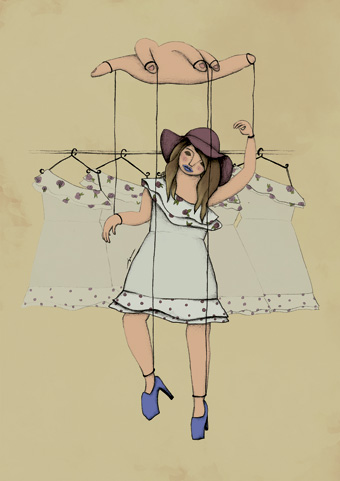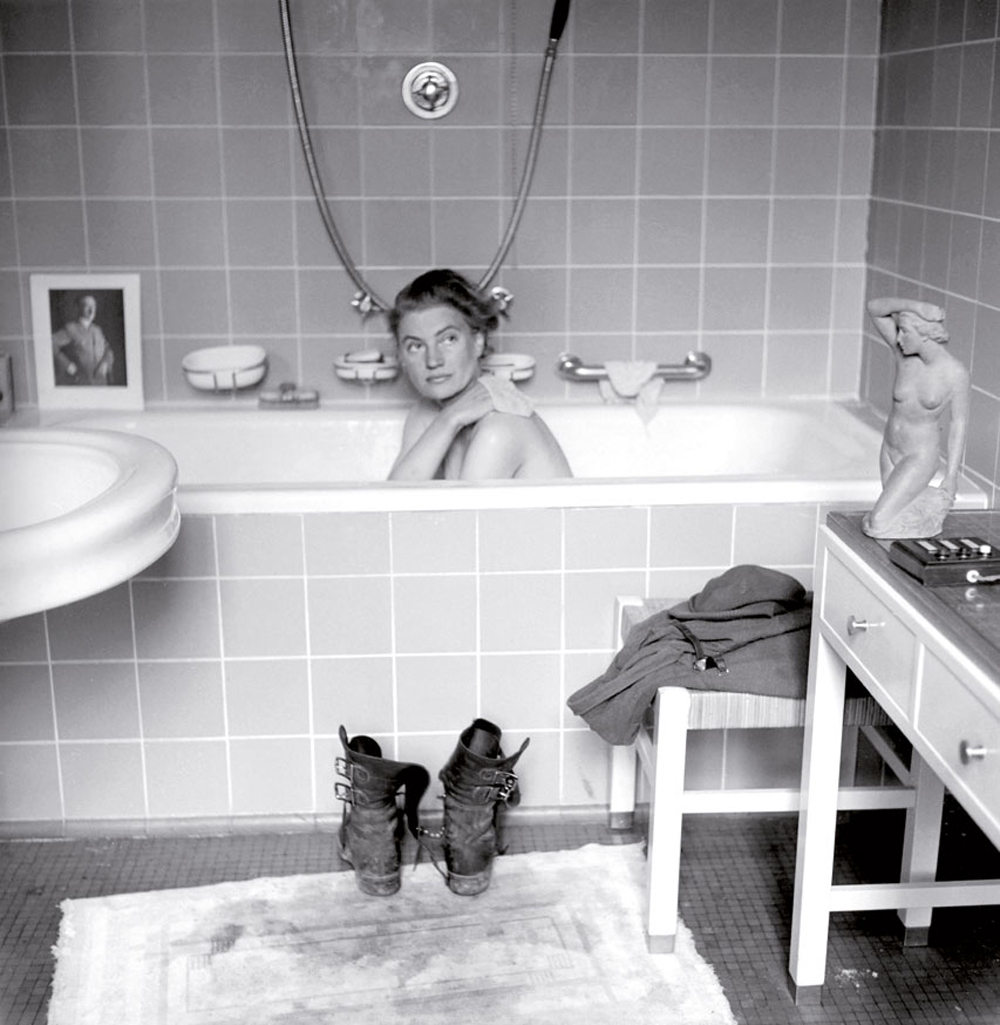Cut tags, sewing tags
- What does it say about what you saw? What does every t-shirt or trousers we have in our closet hide? Who produces and consumes? When do we buy them out of necessity and how many times on a whim? The explanations given to us by various partners about the textile industry and fashion serve us more to undress than to dress us up.
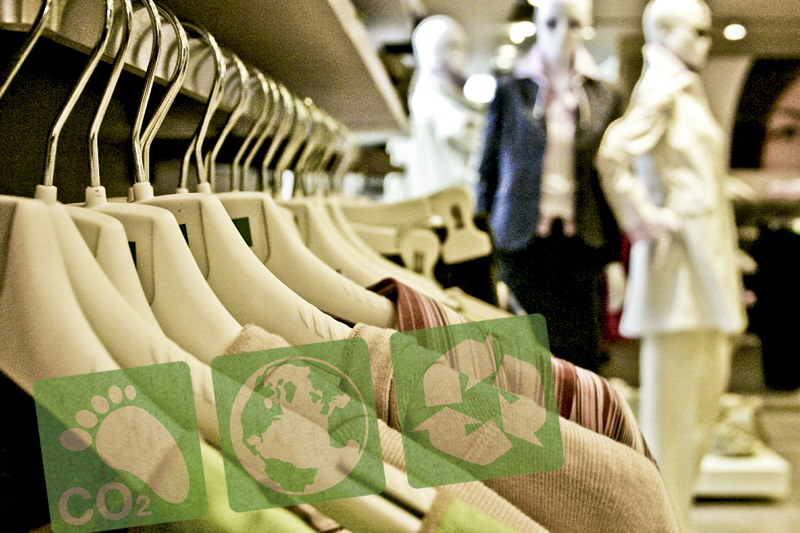
A suit has a long history behind it. From creating yarn and fabric, to sewing and selling through different colors, sizes and fabrics and under the direction of a design. It seems simple, but this long process includes many factors: which raw materials are used, who does the job, how the designer thinks, for whom it is produced, who buys ... Whether you're conscious or not, these characteristics are built within a system and directly affect our body and our lives.
All of us who live in the world need to dress up. However, the capitalist system has taken advantage of the fashion industry and the textile industry for its own sake, mixing or replacing the real need with well-being. The fact that the purchase of clothes becomes a custom or pastime and that the closets are becoming more and more filled feeds the system itself and keeps these values in force. Thus, the textile industry is governed by major global brands and sometimes feeds on labor exploitation, the use of toxic products, health problems, manipulation of tastes and sexist advertising, among others. However, there are those who are opening new paths in the huge sector of fashion and the textile industry.
Fashion against fashion
Aretxabaleta designer Katalin Antxia Abasolo believes that beyond aesthetics fashion counts something else. He has created a clothing brand called The Modubat, which is the “mirror of his ideology.” As its name suggests, it reflects one way of looking at fashion, another way: “Little by little we have begun to see what is behind the fashion industry and we do not want to be a party; neither because of the damage it does to the environment, nor because of the aggressive treatment it gives to the human being.” Thus, he has opted for another way of consumption, clothing and work: “Results united by consciousness, coherence, intentions and ideologies”.
She was trained in communication before starting in design and today she has the same clothing as a communication tool: “Fashion is a communication support, because it does and teaches politics.” He explains to us that he creates what he cannot find in the shops, that he makes a fashion based on unaesthetic, respect and well-being: “I like to break the rules and create mine.”
Katalin Antxia, designer: “We also have responsibility as consumers. Find out where the clothes have been made, the values that this brand has... We have to think about where we want to spend our money.”
Antxia’s way of working coincides with slow fashion philosophy. It consists of giving importance to time and enjoying the process. The current model makes “fast fashion”, in two weeks hundreds of productions are created and trends are constantly renewed: “Trends run away in two days. This real form of work also involves the production of poor quality garments and the use of toxic products to achieve it,” says Antxia. Facing an intense and stressful rhythm, he values giving each process the distance it needs, reflecting on the design that defines as “minimalist” and creating products to be perpetuated.
The time needed at work, and as high as possible. To do so, clothing must be sustainable and that is another of the values that Antxia deals with and that associates it with health: “I work with natural materials, because they are the ones I love most and sustainable.” The natural fibres it uses come from renewable sources, which use “processes and materials that respect the human being and the environment”.
He has confessed to us that taking all this forward also has difficulties: “It takes skill and also in very different areas: languages, a non-exhaustive communication capacity, ability to be attentive, wanting to participate in fairs, magazines and events... to see if while I do all that I am in contact with the client, because I also carry the online store”.
Around the world, there are eleven sustainable projects that use ecological raw materials: the spartins of the brand Kameleonik, based in Bilbao; the wool jerseys of the Catalan brand Xixqueta; the Galician jeans Xiroeco; the clothing of the house Ecoology; the Mandacarú shirts with organic cotton; the products Rebelroot and Peopletreet Shag. Taking a look at the stores they have on the Internet, we've realized that their suits have all kinds of prices, that contrary to what you might think is that you can consume products of this kind without having to stick in your pocket.
Awareness and coherence
Antxia reflects in her designs a complete ideology, has worked with conscience and coherence before the mass textile industry. The way of working has come to be integrated into their own lives: “By the time you realize, you have changed your lifestyle, because, for example, you have to buy local products, avoiding as much as possible the supermarket model.” He tells us that he works directly with producers and customers: “We are working with and working with a group of women at risk of social exclusion. We foster a culture of conscious consumption in our actions.”
As a potential buyer, the designer invites us to reflect: “You have to know the concept of Green Washing. It denounces brands that are easily linked to sustainability and mass-produced in developing countries.” The idea of questioning what we buy has moved us: “Look at the composition of the costumes and always choose for the natural ones. Monomaterials, that is, those that have the same material 100%, can be easily recycled at the end of their lives. Check the mark you produced, where it was produced or what the working conditions are. You can check the Internet. In addition, learn about the Fashion Revolution movement. Check the positive impact of each pair in terms of envelope, social and economic. Think about the project you want to spend your money on. We often have speeches of Christ, but we need to do these exercises.”
What we need to know about a five-euro t-shirt
About 70% of clothing consumed in Europe is produced in Asia. Another little in North Africa and Western Europe, precisely in the economically poorest countries. It is not clear where exactly the seamstresses, which are completely relocated, work. The lowest wages in the industrial sector are those in the textile industry, which charge EUR 0.18 for trousers of EUR 29 each. This is a work of little recognition and in which 80% of women workers are young women.
In the 1990s, clothing production was transferred to poor countries. In these places salaries are cheaper and clothing brands are more lucrative. Legislation is also more vague, because there are some who do not have regulations governing workers’ rights; there are no unions and if workers go to protest they are punished. In Bangladesh last year there were many demonstrations and strikes over the lack of wages and the imprisonment of many of the workers. All of this is invisible and comfortable for manufacturers. This has been denounced by the members of the Clean Clothes campaign.
They work in 15 European countries. The aim is to improve the rights of garment workers and to this end, they encourage research, complaints, pressure on governments and brands, as well as awareness-raising campaigns. Transparency is now being called on brands and governments to show the origin of products. “Many times the workers are hidden and when something happens there is no responsibility,” says Iratxe Arteagoitia, a member of the campaign. He has set as an example what happened in Bangladesh four years ago, which he described as "terrible horror." The collapse of the building and the death of 1,150 people. “Who was responsible? Nobody,” he says. If these factories and companies were located, the same brand would be legally and politically responsible. “The event had strong communicative pressure and as a result we managed to get 200 brands to sign an agreement against fires and other accidents. That’s why it’s important to convey that we can all do something.”
Firstly, transparency.
The North Face, Desigual, Mango, Adolfo Dominguez, El Corte Inglés, H&M, Inditex, Adidas and Nike are some of the brands listed in the Clean Clothing initiative: “Many times the worker himself doesn’t know who he is working for, because it’s not they who put labels.” Sometimes, in addition, they only mention where the label has been put, not where it has been stitched, where cotton comes from, where the curtain comes from, where it has been cut…”.
Iratxe Arteagoitia, member of the ‘Clean Clothes’ campaign:
“The Asian worker should work for four months to be able to buy a t-shirt cooked by it”
Why is it kept hidden? “Because working conditions are very bad,” says Arteagoitia. “The workers work in the factories and in their homes and in the homes in general all families participate. There is no control.” Most of the workers are young women; for example, by the material and the process of making sportswear and balls, small hands, of women and children, are needed. “Historically, moreover, sewing has been represented as a domestic profession and women have been the ones who have been at home. Also, women’s salaries have always been lower than men’s.” In their words, there are not many opportunities for other jobs in these countries, and that is what the manufacturers take advantage of. “In Cambodia, for example, you don’t have a job, you’re a seamstress or you’re a prostitute.” It denounces that sexual assaults also occur in this sector: “They have an effective tool to control women.”
In addition, they perform overtime not charged, as they have to sew hundreds of pants in a week: “And then, when you look at the prices, you should work four months to buy that same t-shirt.”
Health and the environment
Arteagoitia ensures that the way of working and the products used are harmful to health and the environment. The cowboy tells us about the technique of wear: Sandblasts are thrown onto the cowboy tissue to form wear, which can lead to a respiratory disease called silicosis, which is common in mines. There have also been deaths among those who have been wearing jeans. Cutting fabrics is not healthy either. It releases dust and by inhalation it reaches the lungs. In addition, they lack protective measures, such as face masks.
“When the red color is fashionable the streams from these countries become red,” Arteagoitia complains about the dyes and toxic products being used. The environmental organization Greenpeace denounced last January the discovery of toxic products in mountain garments belonging to various brands of various kinds. “A toxic product harms the environment and is in the clothes we wear. So what?”, asked by the member of the Clean Clothes movement.
Consumer responsibility
If you make these kinds of garments, it's because they're bought. For this reason, Arteagoitia considers it essential to influence consumers' consciences: “On the one hand, to know what we buy and, on the other, to exert some pressure on everyone. They will start to change when it affects their pocket.” Amancio Ortega, founder of the multinational Inditex, reminds us that he is one of the five richest people in the world and that his products are manufactured in poor countries and sold in rich countries. “And we live in rich countries.”
As part of the consumer chain, he says that we must collect information and mobilise ourselves. It believes that the textile structure needs to be changed because changing the rules will take into account health, safety, collective business and life itself. “The question is not just what to buy and where, but to take advantage of different options: to fix clothes, to take second-hand clothes, to change them with someone…” It proposes to make a bet on small trade: “In most cases, the seller himself is the producer and they are aware.”
In order to value wool
The essential component of the consumer chain is the raw material, the material to be used in the manufacture of garments. In this sense, it is up to us to talk about wool, a raw material today of little value, which is often thrown out by pastors or sold at very low prices. However, there are projects that seek to revitalize its use and consumption, such as Sara's Iletegia project. In 2014, Aitor Zubilhgh,Aña Andiazabal and Joana Urbistondo started making mattresses, pillows, cushions and duvets from wool for the occasion. Due to the characteristics of the wool of each sheep breed, manex wool and latxa sheep are used in the hairdresser. “As a farmer we know that the hair is very low paid, between 8 and 12 cents a kilo, it is a loss for farmers,” Urbistondo said in an interview in May of last year by Laborari magazine: “It means the court has more expense and sheepskin doesn’t pay that. They need to be put in bags to be brought away and paid a year later. Some have come to the art of smoking. There is a major problem in this regard and we do not know how it will happen in the future. We must think collectively about what can be done or how to think so that wool has value.”
Another example is the craftsman Sandra Cliville. He has been weaving wool fabrics for years and producing natural dyes in Ataun's Ustatxo Goikoa farmhouse. Cliville studied grazing at the Arantzazu Pastors School. He's got a flock at home and he works the wool that he pulls out of him. It develops the whole process, starting to dry naturally and preparing fabrics on the loom. In the face of synthetic fibers derived from oil, he makes a “cry for natural materials,” as highlighted in the article published by journalist Aimar Maiz in Goierriko Hitza.
When flax was a trade
“One hundred jobs,” says an old saying. In the past, flax and lihogaza were of great importance in the Basque Country. Until the 20th century it was raw material for making fabrics and suits, along with wool. The larraul PILI Otaegi and Koldo Jauregi have investigated and demonstrated that they were working in flax, and have recovered the trade for a year, have known it and made it known.
At one time, growing the flax plant and creating the fabric was a profession, usually performed by women. “This profession gave women freedom and independence. For widows or single women, flax was a means of life and of owning oneself, also for self-esteem,” says Otaegi. When the girls were 12 years old, we've been told that their parents were preparing a piece of field for them to start growing it. He added that many testimonies have been collected about flax, but that, in general, the activity has been unknown because it is in the hands of women.
Jáuregui curiously asked his father what the well surrounding the source of Katillutxulo was. His father replied that they were flax wells. It was around 1976, but until a year ago, it didn't start to shape the idea it had in its head. Instinctively he began again to ask the citizens, and to throw away his stories he began to recover the well of flax, at the hand of the Cultural Association Dine7.
Nature had embraced the well, surrounded by braces and stones. It was cleaned, rebuilt and filled with water in 2016. Meanwhile, they also created a linen field. All the data is collected in a book and they intend to take a video. Last year, an exhibition was installed in the village that explained all the development of flax, from seed to shirt.
- Galdegin: benetan behar dut erosiko dudana?
- Irabaziak norentzat diren pentsatu.
- Kalitatea eta iraupena ziurtatu.
- Osagaiak begiratu, materiala aztertu.
- Lehengaiak murrizteko bestelako irtenbideak bilatu: trukea, bigarren eskukoa...
- Gehiegikeriari uko egin, informazioa eskatu eta koherente izan.
- Erabilera amaitzen denean, birziklatu.
- Zure arropa zaindu.
Wearing the same clothes for a long time is not well seen, it may be. They once told a professor friend in the liceo that it was time to buy a new jacket. This trend has been reinforced. Broadcasters and TV commentators each day stretch different garments. Mikel looks exempt... [+]
We propose the following challenge: open your closet in front and look from top to bottom and from left to right. Don't forget what's inside. Watch carefully everything you keep and (sincerely) answer the question: How many clothes have you not worn in a year?
According to the... [+]
Fashion has gone from the time of the alfer class to a totally transversal phenomenon. For most, the clothing industry offers Fast Fashiona. According to the apparent trends of each moment, they create and market millions of garments, stimulated by the need to continuously... [+]
Emakume sortzaileak biltzen dituen Dinagu kolektiboak azoka antolatu du martxoaren 12an, Aiaraldeko Faktorian (Laudio). Emakume sortzaileen lana bisibilizatzea eta sortzaileen beharretara egokitzen diren ekimenak sortzea helburu, “herriz herri sortzaileak batuko dituen... [+]
You turn up years and you realize you've done more than half a life. That they've gone through several stages, that they've left over more than one phase, that the body is not going to be the same again. If you're a woman, you'll also make sure that the ability to make children is... [+]
Ingurumenean kontzientzia duten norbanako eta profesionalak biltzen ditu urtero Durangon ospatzen den Berdeago Azokak, eta seigarren edizio honetan 20.000 bisitari inguru erakartzea espero du. Azokaren jarduera paralelo gisa, arduradunek tailer eta solasaldi sorta bat antolatu... [+]









